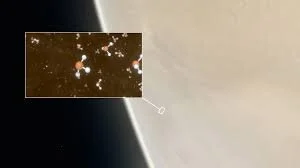This week’s post is dedicated to dark energy in the context of (not solving) the Hubble tension, the possibility that the NANOGrav pulsar timing array may have detected non-tensorial gravitational wave polarizations, and the construction of a general covariant action for the so-called holographic dark energy model. Enjoy the read and have a nice weekend!
Top arXiv papers from Week 51, 2020
After a while that this subject hadn’t appeared in my blog, this week’s entry is entirely dedicated to the Hubble tension: a new observational update in light of Gaia DR3 parallaxes, an old model being killed, and prospects from future neutron star-black hole mergers. A heads-up that this will be the last entry for 2020, as I’m “going” on holidays. Stay tuned for next year’s entries, “see” you soon, Merry Christmas and Happy New Year!
Top arXiv papers from Week 50, 2020
Top arXiv papers from Week 49, 2020
Top arXiv papers from Week 48, 2020
This week’s entry looks at the first measurement of the cosmic birefringence angle from the CMB, the generation of large primordial non-Gaussianity from Higgs-induced modulated reheating, and a quasi-model-independent inference of the Hubble constant and the late-time expansion. Happy Thanksgiving to my American readers!
Top arXiv papers from Week 46, 2020
This week’s entry deals with new measurements of the Deuterium-to-Helium-3 cross-section with extremely important implications for Big Bang Nucleosynthesis, and two papers on axion-photon conversion (and vice-versa) in astrophysical environments. A heads-up that next week’s blog installment will likely be cancelled due to personal reasons (see here). Enjoy!
Top arXiv papers from Week 45, 2020
Top arXiv papers from Week 44, 2020
This week I cover a rebuttal against the claims of having detected phosphine (possibly connected to life) on Venus, a proposal for solving the core-cusp problem using late-time dark matter oscillations, and how self-interacting dark matter could provide the seeds for the observed supermassive black holes. This week I've found it particularly important to repeat a few important caveats: my covering particular papers does not necessarily mean I endorse the science or the writing style, just that I found the paper particularly interesting (it may even be directly outside my field of research). In other words, your mileage may vary, so don’t forget to take whatever you read here with a grain of salt. One thing I’m starting to do from this week on is to explicitly point out when a certain paper has been signed alphabetically (which is often the case within hep and gr-qc), in an attempt to hopefully give more visibility to early-career physicists whose last name initials, due to no fault of their own, reside in the second half of the alphabet.










